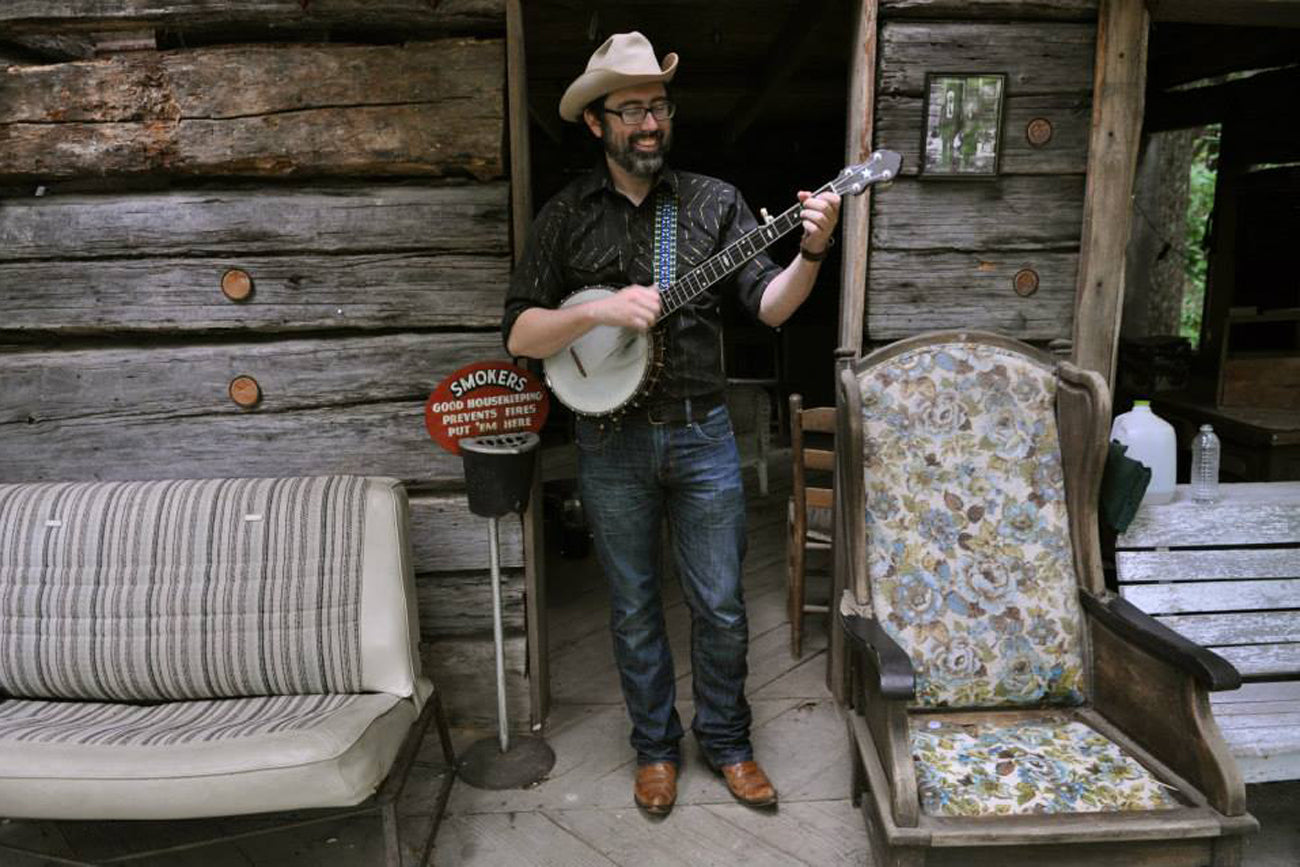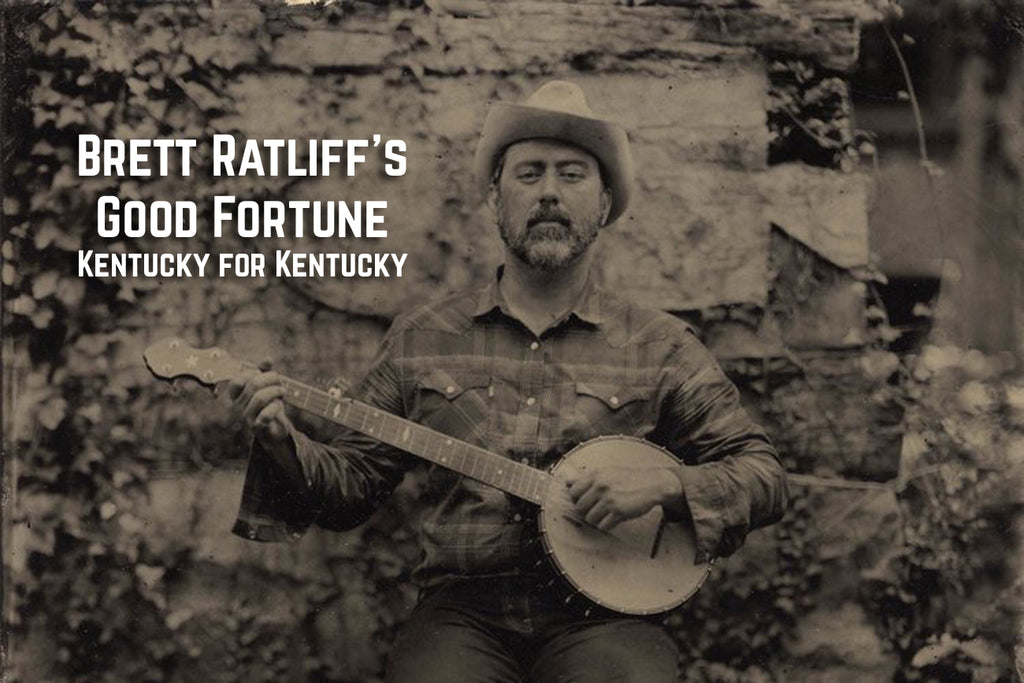Writer Robert Gipe pulls back the velvet curtain on Kentucky native Brett Ratliff's collection of arresting new songs.
There was a man who came from Oklahoma. He tried to rob a train — and did — but he put too much nitroglycerine in the charge he used to blow up the safe. He blew the whole train car into splinters, fused the coin in the safe to the remains of the safe itself, and blew all the bills to dust. The man only wanted to be an outlaw, but he was bad at it. Really bad. That man from Oklahoma, Elmer McCurdy, died because he robbed another train, and the train he robbed was not even the one he meant to rob. He only got $46 and two bottles of whiskey from that one. The train with the $400,000 payroll, the train Elmer McCurdy meant to rob, came by minutes later, but by that time Elmer McCurdy was losing a shootout with the law. The law killed Elmer McCurdy.
Elmer McCurdy's death led to his having a 55-year-long career in the entertainment industry himself. The undertaker who embalmed ElmerMcCurdy expected it to be a very long time before anybody came to claim him, so he put a whole lot of extra arsenic in Elmer McCurdy's body so it would stay fresh-looking longer. No family ever came for Elmer McCurdy, at least not for the five years his body set propped up in the funeral home labeled as "The Embalmed Bandit."
Two carnival operators who said they were Elmer McCurdy's brothers finally claimed him, although you know they weren't really. They said they'd come to take his body so his dying mother could see it, but what they did was put Elmer McCurdy's body on display next to wax figures of Jesse James and the Dalton Gang, take the show all over the country and charge people to look at it. And when parts of Elmer McCurdy's body fell off, they replaced them with wax until people thought Elmer McCurdy's body was a wax statue, too. But it wasn't, at least not all of it.
That's what they finally found out when the museum he ended up in was in an episode of the Six Million Dollar Man, which starred the proud Kentuckian (Bell County) Lee Majors. During the filming, Elmer McCurdy's arm fell off and they discovered it had a human bone in it, and Elmer McCurdy got sent back to Oklahoma, where the town of Guthrie gave him a grand funeral and buried him next to the outlaw Bill Doolin, founding leader of the notorious Wild Bunch. I like to think Elmer McCurdy would have found this ending very personally satisfying.
And as I sit here in the wee hours, eating a Fischer baloney sandwich with that good Duke's mayonnaise on it, nursing an enhanced Ale-8, I would offer the aside that it seems inevitable that Elmer McCurdy, despite hailing from Oklahoma, must have some Kentucky connection, although I will leave its establishment to others.
But the thing is, I never would have known any of that about Elmer McCurdy had not Brett Ratliff created an album called Gone Boy that includes on it a fine banjo instrumental called "Elmer McCurdy's Misfortune." Had not Brett Ratliff said in the liner notes to Gone Boy that he had read an article of the same name as the title of his instrumental, I would not have gone hunting for it and would not have found that article, written by a Marshall Trimble, in the online archives of True West magazine. And I would have been diminished for not having done so.
I don't know much about banjo music, what qualifies it, but I admire the restraint of Brett Ratliff in making an instrumental of Elmer McCurdy's story and leaving it to us to discover what that story is. Because that's the thing about Brett Ratliff. He ain't in no hurry to do too much for us. He ain't gonna chew our food for us. All his songs are just the tip of a world — a good-looking pair of feet poking out from beneath a velvet curtain — and we're the ones who are obliged to pull back the velvet to see what's attached to them feet.
This is a gift he gives us, at his own expense. And it's better that way, although some people don't think so. They give Brett Ratliff puzzled looks or fail to see him altogether. He gives people more credit than oftentimes they have earned.
You take this video for Brett's version of "Fire in the Hole." The song in itself is amazing, with what Silas House, in his fine liner notes to Gone Boy, calls "noise guitar" laid underneath traditional fiddle and vocal. The track also pairs voice samples from union boss John L. Lewis with lyrics written by John Sayles and Mason Daring for Hazel Dickens to sing in the seminal film of unionizing and Appalachian coalfield life, Matewan. And then, in the video, they intersperse scenes from the Occupy Wall Street protests with Ratliff performing the song in the White Water Tavern in Little Rock, Arkansas.
It's a lot to assemble; to let roll over you, all haunted and direct and dense. It makes you think about how far we haven't come — how much resolve it takes to come together tight enough to even think about how we might get things straightened out. When it dawns on you how much is going on in that song, it's exhilarating. And kind of daunting.
It makes you think about how far we haven't come — how much resolve it takes to come together tight enough to even think about how we might get things straightened out.
I ain't gonna go through the whole album and explain how every song is like that. But they are. What I'll say is this: Brett Ratliff is the musical Elmer McCurdy. I say that because he uses too much nitroglycerine. Too much fire in the hole. And the money gets blown away — blown to bits — but what's left is the story and the revelation of dreams and skullduggery and irony and joy. What's left is the humanity, delivered to us in a blinding flash of light. God bless Brett Ratliff. May he be buried amongst the finest of outlaws.

Photo by Rose Skelton
For more on Brett Rafliff's music, his new album Gone Boy and tour dates, visit brettratliff.net. Featured photo by Lisa Elmaleh.
Head over to the shop for great deals on fresh Kentucky gear, or come on down and visit us at the Fun Mall, y'all! 720 Bryan Ave. in Lexington.


